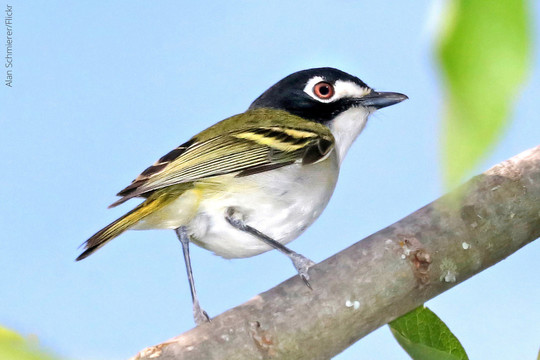
Hummingbird Feeders on Oklahoma Gardening
Many Oklahomans welcome the spring return of hummingbirds and invite our state's smallest birds to their backyards and porches with special sugar water feeders. In this Oklahoma Gardening clip, Oklahoma State University’s Tim O’Connell gives tips for cleaning hummingbird feeders, discusses the pros and cons of feeder design, and shares a sugar water recipe.
Watch the Oklahoma Gardening clip
Species Spotlight: Speckled Kingsnake
Rising spring temperatures trigger an increase in reptile activity and can lead to more sightings of snakes like the speckled kingsnake. This black and yellow nonvenomous snake can be found statewide in a variety of habitats. Though it is a relatively common snake and can be found around buildings and scrap piles, it is somewhat secretive and can be difficult to find.
Kingsnakes eat small mammals, birds, frogs, and lizards but are best known for their ability to eat large snakes, including venomous species. A speckled kingsnake can eat snakes as long or longer than it is.
Learn more in the Wildlife Department's Online Guide

Rare Vireos Persist at Historic Blaine County Site
Oklahoma's first discovered population of black-capped vireos was in Blaine County in 1901, but the advancement of eastern redcedar trees in their canyon homes had pushed them out of the county by 1980. To help the then-endangered bird the Wildlife Department teamed up with the Oklahoma Nature Conservancy and U.S. Fish and Wildlife Service to cut cedars from the property. More than 14 years later, we're still seeing the benefits. The Oklahoma Biological Survey heard at least 41 territorial males singing in the restored canyons last spring. Five of those males had been captured and banded in the area during a 2017 study.
This project was funded in part by the Oklahoma Department of Wildlife Conservation and U.S. Fish and Wildlife Service’s Section 6 Grant F19AP00249.
Get more details and see photographs of the habitat work in the full report
Search for American Bumble Bees Continues
The Wildlife Department is checking on the status of what is thought to be one of our state's most common bumble bees and you can help! Photos and sighting information of the American bumble bee can be uploaded to iNaturalist, a free crowdsourcing platform that allows nature enthusiasts to connect with biologists as well as a larger community of naturalists.
Like Oklahoma’s nine other bumble bee species, American bumble bees are relatively large, with a black and yellow body, and hairy abdomens. But American bumble bees have a specific pattern with three black and two yellow bands. The first yellow band is just behind the eyes on the thorax, or body of the bee, with the second band located in the middle of the abdomen.
At least 61 verified observations of American bumble bees in 19 counties were shared with the Wildlife Department last year.
Upload your photos and sighting details with iNaturalist

Endangered Cranes Make Migration Stop at Drummond Flats WMA
Whooping cranes, North America's tallest birds, pass through Oklahoma each spring and fall as they migrate approximately 2,500 miles to and from their breeding and wintering grounds. This spring several of the large, white birds made stops in Oklahoma wetlands, including Drummond Flats Wildlife Management Area near Enid, to rest and refuel.
Whooping crane sightings can be shared at wildlifedepartment.com or by contacting Wildlife Department biologist Matt Fullerton.
|